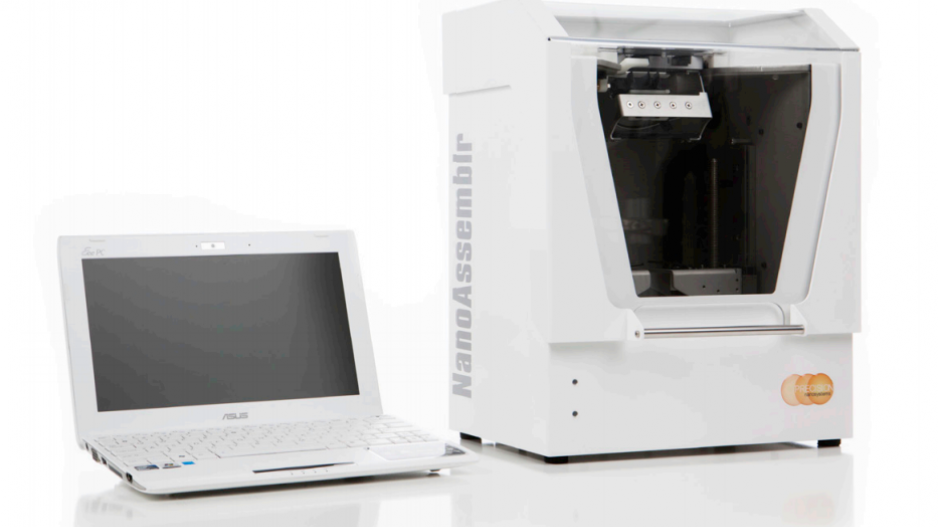There’s no question nanomedicine falls within the realm of life sciences.
But producing this type of specialized medication is still more art than science, according to Precision NanoSystems, Inc. (PNI) CEO James Taylor.
“You usually need a very skilled operator, you don’t have much flexibility in what you can make, it’s hard to reproduce these drugs and it’s hard to scale them from small scale to large scale,” he said.
The University of B.C. spinoff company, however, has developed a printer-sized device that allows researchers to control exactly how the nanomedicine is developed through microfluidics.
Think of it like tiny pipes that need equally tiny tools if the plumbing in a building is to be fixed. A regular-sized wrench just won’t cut it in terms of precision.
But PNI's benchtop unit can control the development of nanomedicine to approximately the nanometre. Its microfluidic channels are on the order of about 100 microns, which is why Taylor believes his company’s product has fixed a lot of the problems other companies face when developing these kinds of medications.
Nanomedicine uses nanotech — extremely tiny technology — to deliver drugs directly to the disease.
“So if you have cancer and you’re taking a very potent cancer drug, you want that to go directly to the tumour to have its effect and not everywhere else,” Taylor said.
And investors, drawn to the possibility of controlling the development of such medication, have been forking over big dollars.
In September, PNI announced it raised $13.4 million from investors including 5AM Ventures and Telegraph Hill Partners.
The company has sold 60 of its NanoAssemblr devices to date — most of them outside the Canadian market — and Taylor said the plan is to use the investor money to ramp up product development and manufacturing — most of which is done in Canada.
Even before September’s big funding announcement, the Genome B.C. research organization had identified the nanomedicine work being done at UBC as commercially viable.
Gabe Kalmar, Genome B.C.’s vice-president of commercialization and entrepreneurship, said sinking $600,000 into early stage research made sense when it was so obvious the breakthroughs being made were filling a niche in the life sciences sector.
“There’s absolutely more of a need to do this,” he said, adding there are still many holes when funding this research in B.C. compared with venture capital-rich San Francisco or Boston.
“There’s also a large amount of untapped (British Columbian) technical wizardry that does have potential.”
Kalmar said Genome B.C. is now working more closely with the entrepreneurship@UBC accelerator program to make sure researchers from more academic backgrounds are linking up with business executives.
“We can do things because we have a lot of the knowledge, we have a lot of the capacity since we also fund the earlier stage research leading up to this,” Kalmar said.
“It’s no different in life sciences or this space than it is in any other area. It’s very often the people and the willingness for them to do the right things at an early stage that is so critical.”
@reporton



